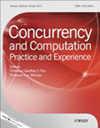C-LSTM Traffic Anomaly Detection Model Based on Attention Mechanism
Abstract
Amid the rapid expansion of digital infrastructure and the escalating sophistication of cyberattack strategies, network traffic anomaly detection has emerged as a critical cybersecurity mechanism for securing modern digital ecosystems. To overcome the shortcomings of traditional machine learning methods—specifically their limited accuracy in traffic pattern recognition—this paper proposes a novel C-LSTM anomaly detection model enhanced by an attention mechanism. Building on advancements in deep learning architectures, the proposed model integrates CNNs and Bi-LSTM networks to comprehensively capture spatial and temporal traffic features. The attention mechanism mitigates Bi-LSTM's inherent vulnerability to vanishing gradients during long-sequence data processing by adaptively reweighting feature significance, thereby optimizing detection performance. The model was rigorously validated using the NSL-KDD and UNSW-NB15 standard benchmark datasets and evaluated against contemporary state-of-the-art detection methods. Experimental results demonstrate superior performance, with classification accuracies of 97.3% on NSL-KDD and 95.8% on UNSW-NB15, alongside a 12% reduction in false positives compared to baseline models. Notably, the attention mechanism achieved incremental accuracy improvements of 1.62% (NSL-KDD) and 1.48% (UNSW-NB15) compared to the baseline CNN-LSTM model. These findings demonstrate the model's effectiveness in enhancing anomaly detection robustness, providing a practical framework for real-world cybersecurity implementations.


 求助内容:
求助内容: 应助结果提醒方式:
应助结果提醒方式:


